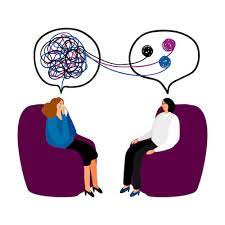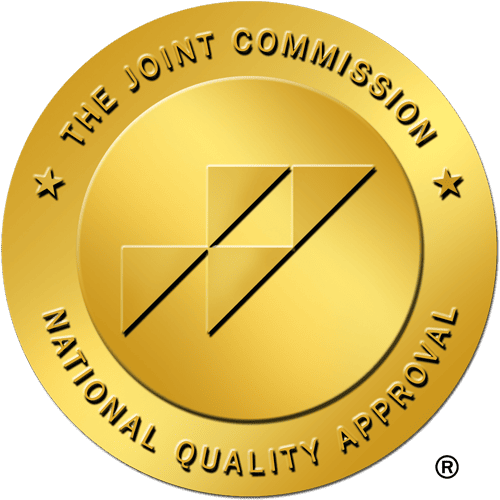Understanding Anxiety: A Brief Overview
Anxiety in Princeton, as defined by
mental health professionals, is an emotional response characterized by feelings of tension, worry, and physical changes like increased blood pressure. It is a common mental health issue, experienced by most individuals at some point in their lives. Anxiety can range from fleeting feelings of unease to full-blown attacks which can be severe and debilitating, inhibiting one’s normal daily routine. The causes can be multifarious, varying from genetic factors to environmental stimuli or specific traumatic events.
Within the ambit of anxiety, there exist various subtypes such as Generalized Anxiety Disorder (GAD), Panic Disorder, and Social Anxiety Disorder, each with its own unique set of symptoms, but all revolving around a common theme–persistent and excessive fear or worry in situations that are not threatening. Understanding the nature, manifestations, and intricacies of anxiety is the first step towards effective management and treatment. Knowledge on this subject allows individuals to not only better comprehend their own experiences but also empathize and assist others who might be trapped in the throes of anxiety.
The Importance of Identifying Anxiety Early
Early identification of anxiety is of paramount importance, primarily due to its potential to interfere significantly with daily living. Anxiety disorders are among the most common mental health conditions, and they can manifest themselves in a variety of ways, often affecting individuals’ education, careers, and personal relationships. Additionally, anxiety disorders are frequently linked to other mental health issues such as depression, and this comorbidity can exacerbate the impact on individuals’ life quality and overall health.
When anxiety is identified and addressed promptly, it allows for early intervention and a greater probability of successful treatment. Early detection may also prevent the progression of anxiety symptoms to a full-blown disorder. Key to this is an awareness of the signs and symptoms of anxiety among individuals, families, educators, and primary health care providers. Appropriate training and education can equip these groups with the tools to recognize and respond effectively to the early signs of anxiety, mitigating its potential adverse effects on an individual’s life course.
Training Programs for Anxiety First Aid
First aid training programs designed for mental health conditions such as anxiety are integral to fostering a mentally healthy community. These specialized courses are designed with the objective of equipping individuals with the requisite knowledge, skills, and confidence to acknowledge, understand, and aid others experiencing anxiety symptoms. A critical part of these training modules revolves around mastering quick and effective response strategies, which can play a decisive role during an individual’s anxiety attack.
Such programs follow a structured curriculum that incorporates theoretical knowledge about what anxiety is, its primary triggers, manifestation, and impacts. Furthermore, practical components provide hands-on training exercises simulating real-life situations of anxiety attacks. This hands-on experience helps participants develop crucial communication skills which serve to reassure affected individuals. Importantly, learning correct methods to provide comfort and safety during distressing moments defines the heart of these training. The aim is not to replace professional assistance, but to bridge the crucial gap until professional help is accessible, providing immediate support during a crisis.
How to Recognize Anxiety Symptoms
Recognizing anxiety symptoms can be challenging due to the vast spectrum of manifestations they may present. They can range from physical sensations such as heart palpitations, dizziness, and stomach discomfort to cognitive difficulties like excessive worry or fear. Some individuals may also exhibit behavioral changes such as restlessness, irritability, or difficulties in falling asleep or staying asleep. It is crucial to bear in mind that these symptoms might not be necessarily observable or overt, often lurking silently within an individual’s internal experiences.
In discerning these symptoms, a holistic understanding of an individual’s demeanor and behaviour is pivotal. Frequent bouts of unprovoked nervousness, agitation, or panic can point towards anxiety disorder. Other perceptible signs may include a shift in appetite, social withdrawal, and continuous avoidance of certain places or situations that trigger stress or fear. It becomes essential to exercise caution as these symptoms might also surface due to other underlying health conditions. Therefore, it is recommended to consult with a qualified healthcare professional for an accurate diagnosis.
Approaches to Calm an Individual Experiencing Anxiety
Breathing exercises serve as a fundamental approach to instill calmness in individuals who are grappling with anxiety. Profound and focused inhalations and exhalations aid in slowing down the heart rate, restoring the normal breathe pace, and relaxing the tense muscles. According to the American Institute of Stress, encouraging individuals to practice deep abdominal breathing for about 20 minutes per day can contribute significantly towards mitigating feelings of anxiety. Other simple exercises can also be introduced, like the 4-7-8 breathing method which involves inhaling for four counts, holding the breath for seven, and exhaling for eight counts.
Mindfulness is another path that has demonstrated its efficacy in dealing with anxiety-induced stress. It requires immersing oneself completely in the present moment, acknowledging and accepting feelings, thoughts, bodily sensations. With regular practice, it promotes self-awareness, improves cognitive flexibility, and promotes adaptive responses to stressful situations. Additionally, exposure therapy and cognitive behavioral therapy, administered by trained professionals, have been routinely employed to help individuals confront their fears and anxieties in a safe, controlled environment, thereby enabling them to understand, manage, and eventually overcome their anxiety.
Role of Non-Professional Aid in Anxiety Management
The influence of non-professional aid in managing anxiety cannot be overstated. Often, situations of anxiety and panic can occur in settings where professional mental health assistance is not readily available. In these moments, it is the individuals in the immediate vicinity, usually family, friends, or colleagues, who become the primary responders. These non-professional caregivers play a pivotal role in navigating the situation, offering immediate comfort, and assisting in symptom management. While their interventions are not a replacement for professional help, they can significantly bridge the gap and mitigate the intensity of the anxiety experienced.
Moreover, these non-professional respondents can benefit from a basic understanding of anxiety disorders and rudimentary training in anxiety first aid. Initiatives, like anxiety first aid programs, are designed to equip ordinary individuals with essential skills and strategies to respond effectively in such situations. Especially knowing that adequate and timely intervention by these non-professional caregivers can significantly reduce the distress and risk associated with severe anxiety episodes. These individuals thus function as a critical first line of defense, capable of making a profound difference in the lives of those grappling with anxiety.
Techniques for Self-Help During Anxiety Attacks
Cognitive behavioral approaches offer a broad range of self-help techniques that can be employed during anxiety attacks. Grounding techniques, in particular, have demonstrated effectiveness in managing anxiety attacks by helping the individual stay anchored in the present, away from the fears or worries that trigger anxiety. These techniques include focused breathing, observing and describing the environment, physical grounding, such as touching objects, and thought stopping, which involves consciously countering anxiety-inducing thoughts.
Another widely implemented self-help technique involves progressive muscle relaxation. This strategy necessitates deliberate tensing and consequently relaxing each muscle group in the body sequentially. This process aids in identifying the contrast between tension and relaxation, thus enabling individuals to recognize and counteract the physical symptoms of anxiety. In addition, positive visualization or guided imagery exercises can promote relaxation and distraction from anxiety-provoking thoughts. These strategies, while serving as first-hand tools, should be utilized in conjunction with professional support for optimal effectiveness.
Community Resources for Anxiety Support in Princeton
In the town of Princeton, several resources are available to assist individuals dealing with anxiety. Among these resources, local mental health centers offer a wide range of services, including individual counseling, group therapy sessions, and medication management. These centers employ dedicated professionals who specialize in mental health issues, ensuring that individuals receive the appropriate care they need. Furthermore, some centers provide specific anxiety management programs tailored to meet the unique needs of individuals struggling with different types of anxiety disorders.
Another essential resource in Princeton is support groups. These groups serve as safe spaces where people living with anxiety can share their experiences and coping mechanisms. Participants can gain a sense of understanding and camaraderie from others who are familiar with their struggle, making it less isolating. Additionally, the local libraries in Princeton also provide easy access to a wide array of books and other materials on managing anxiety. These resources ensure that everyone has access to the tools they need to understand anxiety better and effectively manage symptoms.
The Impact of Anxiety First Aid on Overall Mental Health
Anxiety First Aid presents a pivotal intervention in the realm of mental health. As an immediate aid system, it can drastically reduce the overwhelming physiological and psychological distress associated with anxiety attacks. Beneficiaries of these techniques range from individuals who are prone to infrequent bouts of anxiety, to those suffering from chronic anxiety disorders. The swift relief provided by it paves the way for greater mental stability and improved quality of life.
Beyond the domain of immediate impact, there is a significant contribution of Anxiety First Aid to long-term mental health. Its incorporation in daily life imparts a certain degree of self-sufficiency to the afflicted individual, reducing their reliance on external assistance. In the long run, it fosters resilience, boosts one’s confidence, and instills a sense of empowerment. This, in turn, leads to higher self-esteem and a more positive outlook towards life. Boding well for mental health, the practice of Anxiety First Aid proves to be an indispensable asset in the arsenal of mental health management tools.
• Anxiety First Aid equips individuals with the means to promptly address and alleviate symptoms of anxiety attacks. This swift intervention can significantly reduce the distress experienced during such episodes, thereby improving overall mental wellbeing.
• The beneficiaries of Anxiety First Aid are not limited to those who suffer from chronic anxiety disorders. Even individuals prone to occasional bouts of anxiety can greatly benefit from these techniques.
• By providing immediate relief, Anxiety First Aid paves the way for enhanced mental stability. It helps in managing overwhelming emotions effectively which contributes towards improved quality of life.
In addition to its immediate impact:
• Anxiety First Aid plays a critical role in long-term mental health management. Regular practice imparts a sense of self-sufficiency, reducing dependence on external assistance for dealing with anxiety episodes.
• Over time, this self-help approach fosters resilience against stressful situations or triggers that may induce anxiety. This resilience leads to increased confidence and empowerment in handling one’s emotional state.
• As an individual gains mastery over their own emotional responses through the use of Anxiety First Aid techniques, they experience a boost in self-esteem and develop a more positive outlook towards life.
In conclusion:
• The practice of Anxiety First Aid is an indispensable tool within the broader spectrum of mental health management strategies.
• Its contributions extend beyond immediate symptom alleviation – it promotes long-term psychological well-being by fostering resilience, boosting confidence and instilling feelings of empowerment among users.
• Thus integrating this practice into daily routines could have profound implications on overall mental health improvement efforts across various demographic groups experiencing different levels or types of anxiety disorders.
Future Prospects of Anxiety First Aid Training Programs
As we continue advancing into the 21st century, the paradigm of mental health care is set to experience unprecedented transformations. Nowhere is this impact more imminent than in the field of Anxiety First Aid Training Programs. Grounded in initial research and trials, these programs show immense potential to shape the mental health landscape by enhancing public understanding, empathy, capability and access to effective anxiety management strategies. As such, future directions will likely explore leveraging technology to expand these training programs, improving accessibility and facilitating more direct, personal interactions.
Parallel to this, the integration of these programs within schools, colleges, and workplaces hints at an ambitious vision. The umbrella of anxiety first aid may soon encompass more than just individual efforts, broadening to effect systemic changes that prioritize mental health. Greater advancements and investments within these programs are anticipated, fueled by a cultural shift towards mental well-being acknowledgment. This movement signals an evolved societal fabric where individuals are not only equipped to manage their own anxiety but also possess the tools to aid others.




